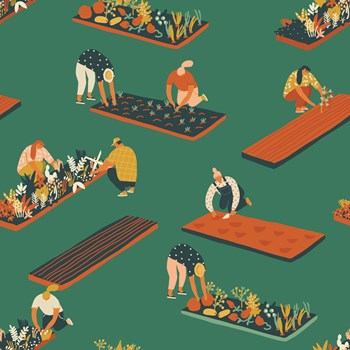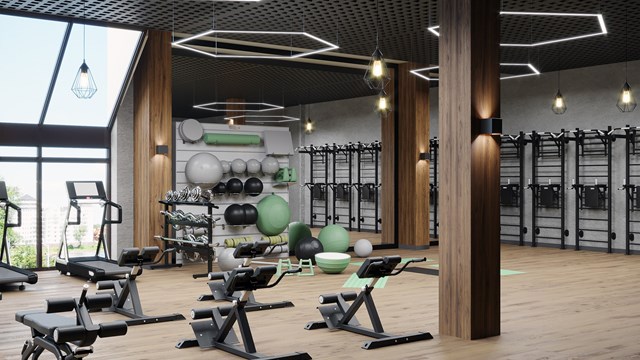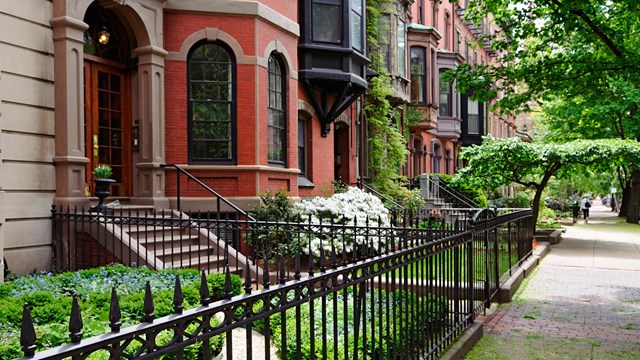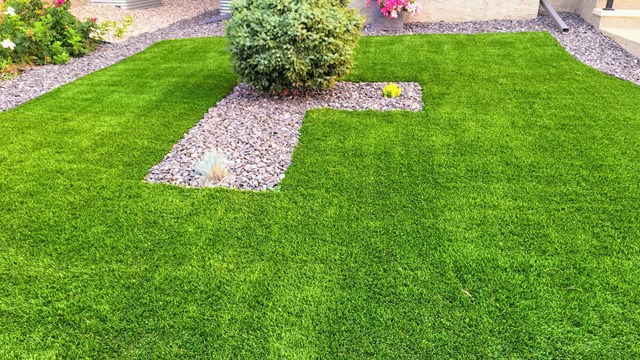
Whether a community is surrounded by suburbs or big-city high-rises, a little greenery can go a long way in adding visual appeal – and value. In fact, given the lack of space and the challenge of keeping plants healthy and thriving, urban gardening is perhaps even more valuable.
Many community associations tend garden plots of varying shapes and sizes, whether they are on roofs, in backyards, or dispersed throughout sprawling townhome developments. And while it may seem simple to plant a few shrubs and leave it at that, the cultivation of a garden actually requires the participation of several different factions who must band together to reach an aesthetic consensus and plan how to take care of the project throughout the year, in good weather and bad. If your association is considering a garden project – or just looking for tips on how to maintain an existing one – management professionals across several regions offer some sage advice that may be helpful.
Taking Charge
An early step in any community garden project is deciding who will assume the responsibility for organizing and planning. Like any project, this will likely depend on the shape and size of the association.
“With smaller buildings, the board typically handles the logistics,” says Bart Steele, a portfolio manager with Barkan Management Company, Inc., in Boston. “In the larger buildings that I’ve managed, there are separate committees that often handle the gardening decisions.”
Management should also be heavily involved. “In my experience, landscaping is often left to the managers,” says Janice Avery, a property manager with FirstService Residential in Chicago. “Sometimes there are committees or board members who chime in and help with some decisions, but that interest can wane, leaving the manager with the responsibility. In my current community, I’m fortunate that the board takes a very active interest in the planning, decision making, and maintenance of the property’s appearance. Our community has won awards for beautification, and passers-by often stop to take pictures with our lush landscaping. Landscaping is not an inexpensive budget item, and the more the community is involved, the better maintained the property.”
“In my established associations, there are garden or landscape committees that tend to be very hands on,” says Natalie Fries, a community manager with Associa Mid-Atlantic in Mount Laurel, New Jersey. “One association that I managed had a farmer/arborist on the board who knew a lot about flowers and plants, and that community was absolutely beautiful.”
While a community coming together to pitch in on a garden or landscaping project is a heartwarming image, more affluent associations (or those whose residents are just really busy) can potentially outsource the whole thing, and then sit back to admire the final product. “It’s always best to hire a third-party contractor,” says Susan Fitzpatrick, Director of Residences at The Ritz-Carlton Residences New York, Westchester. “It removes liability from the association, as landscaping requires tools and equipment that can lead to injury. Everything we do at Ritz-Carlton is ‘best in class,’ so for us, we always use a third-party landscaper. Anytime you’re utilizing more than light tools, or are using chemicals like fertilizer or weed killer, you should use a professional.
“That said, there can be light work on the premises, and residents may enjoy having a stake in the planting of the property,” Fitzpatrick continues. “If you have light tools and a light job, you can always involve the community – especially retirees – with a weekend planting. Supply some shovels, mulch, and a design plan. Have volunteers do light trimming, mulching, and planting. Make sure to use caution around potentially buried gas lines, and be careful with children and tools – have them plant flowers or small trees which they can watch grow over the years. And offer some food: cookies, lemonade, bags of chips and water to give to the volunteers as they work.”
Tight Spaces
Much of the above assumes that associations have lawns, or at least plots of open ground in which they can plant. But for some communities, space is at a premium, and they may need to get more creative in order to introduce a greener element to their property.
“My last community had space constraints,” says Avery. “The property was beneath an elevated train intersection, so natural sunlight was a real problem. In addition, the City of Chicago installed oversized concrete planters, but didn’t actually plant anything in them. There were eight or 10 of these planters, and the property was not served well by leaving them empty, so as the manager, I was able to obtain a small budget for landscaping after showing the community this missed opportunity. Using this budget, I hired a landscaper who delighted our community with holiday plantings, and wowed us with plants that flourished in the shade and flowered despite pedestrian traffic. On our rooftop, there was little room for containers, so we had seating constructed to include planter beds and planted ornamental grasses to beautify the roof deck.”
Boxes and planters are indeed a potential fix for associations that want to add some plant life but don’t have much in the way of available fertile soil. “When we’ve had space issues, we’d have a landscaper add flowers and planters to add color where you could not otherwise grow anything,” says Steele. “Rooftop gardens and plantings are also great, as they get lots of sun – but they do need to be watered frequently, which can be difficult if there’s no ready roof water access. But I find that plants and flowers in urban settings add a lot of value and curb appeal among the otherwise brick-and-concrete jungle.”
Plant-Based Lifestyle
Having a project to rally behind – or even just a shared aesthetic delight – can help bring a community together and strengthen its bonds.
“Gardens are visually appealing and relaxing,” says Steele. “They add monetary value to a property, and most importantly, they can smell great and contribute oxygen and fresh air.”
“Neighbors congregate over landscaping, over flowers, and over seasonal displays,” adds Avery. “Communities compete to be the best-looking property, and it feels good to live in a community that makes an effort to promote its curb appeal. During events such as weddings, graduations, and parties, you often see folks gather in front of planters or flowers to pose for photographs, which to me means that they want to capture the beauty of the garden at that moment.”
Whenever homeowners get to own – or at least steer – a project, they tend to feel more in touch with, and even integral, to the greater community, notes Fries. “Working on a garden should enable a committee to oversee other important communal issues, including:
• Monitoring the work of the landscape contractor to ensure that the duties under contract for landscaping of common areas and private homes are performed as scheduled and in a manner consistent with the quality for which the association has contracted.
• Becoming familiar with the operation of the irrigation system, drainage basins and aerators.
• Determining the need for additional services as resident population increases or other needs arise, and make recommendations to the board.
• Advising the Architectural Review Board on landscape issues related to ARB applications, if requested by the ARB.”
A Warning
Of course, when it comes to planting gardens – or any common area improvement project, really – an association should be mindful never bite off more than it can chew.
“As the manager, we see to it that nothing falls to ill-repair,” says Avery, “but I can understand how a property might allow its gardening to become overgrown. These are often budget-challenged communities with few funds to spare for beautification. Negligence here would be a mistake, however, as buyers are attracted by curb appeal, and might never even enter a property to see the units if the exterior is unsightly. If there are few funds available to accommodate gardening, the community should consider containers in strategic places, or simply plant ground cover.”
Mike Odenthal is a staff writer/reporter with New England Condominium.









Leave a Comment